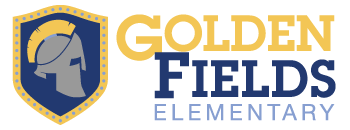Phonics Skills/Strategies
Skill 1: Letter Names and Sounds - Your child should be able to name all 26 letters of the alphabet. These can be capital letters or lowercase. They should also be able to say the sounds of each letter. Tips/Strategies
Skill 2: Short Vowels - Short vowels are commonly used in CVC words, or words that start with a consonant, have a vowel in the middle, and have a consonant at the end. For example: cat, nap, run. Watch this video for an example of each short vowel sound. Tips/Strategies
Skill 3: Initial and Final Blends - Consonant blends are when two or more sounds are blended together, but still make their own sound. For example: brick (br), click (cl), task (sk), and bend (nd). Initial blends take place at the beginning of a word, and final blends take place at the end. Tips/Strategies
Skill 4: Digraphs - Digraphs are a combination of two letters that make one sound. For example: sh, ph, and th. Tips/Strategies
Skill 5: Long Vowel Silent E - Long Vowel Silent E are words where there is a vowel, followed by a consonant, and ends with a silent e. For example: love, cave, site, and bite.Tips/Strategies
Skill 6: Predictable Vowel Teams - Vowel Teams are a combination of two vowels that make one sound. Predictable vowel teams always make the same sound. They include ai, ay, oa, igh, ee, and oe. Tips/Strategies
Skill 7: Unpredictable Vowel Teams - Vowel Teams are a combination of two vowels that make one sound. Unpredictable vowel teams are two vowels that make different sounds in words. They include ea, ie, oo, ow, ou, ew, ue, ei, ey, and ui. When working with your child, help them understand that sometimes, two vowels work together to make one sound. Tips/Strategies
Skill 8: Vowel-R - An r controlled vowel is any vowel followed by an r. The r changes the sound that the vowel makes. For example: er, ir, or, and ar. Tips/Strategies
Skill 9: Complex Consonants - Complex consonants are combinations of consonant letters that are pronounced as a single sound. For example: dge, mb, and tch. This skill also includes silent letters. For example: kn and gn. Tips/Strategies
Skill 10: Closed Multi-syllables - Closed Multisyllabic words have more than one syllable that includes a closed syllable. Closed syllables have one vowel followed by one or more consonants. The consonant closes in the vowel, making it a closed syllable. For example: tidbit, candid, catfish, and napkin. Tips/Strategies
Skill 11: Long Vowel Silent E Multi-syllables - Long Vowel Silent E Multisyllabic words have more than one syllable that includes a silent e pattern. Long Vowel Silent E are words where there is a vowel, followed by a consonant, and ends with a silent e. For example: include, hopeless, mistake, and active. Tips/Strategies
Skill 12: Open Multi-syllables - Open Multi Syllable words have more than one syllable that includes an open syllable. Open syllables end with a vowel. For example: tornado, human, beside, and ruler. Tips/Strategies
Skill 13: Vowel Team Multi-syllables - Vowel Team Multisyllabic words have more than one syllable that includes a vowel team. Vowel Teams are a combination of two vowels that make one sound. For example: fifteen, autumn, laundry, and oatmeal. Tips/Strategies
Skill 14: Consonant Multi-syllables - Consonant Multisyllabic words have more than one syllable that includes the consonant le. For example: candle, sample, table, and circle. Tips/Strategies
Skill 15: Vowel-r Multi-syllables - Vowel-r Multisyllabic words have more than one syllable that includes an r controlled vowel. An r controlled vowel is any vowel followed by an r. The r changes the sound that the vowel makes. For example: forget, border, thermos, and garment. Tips/Strategies
Typical mastery of these skills should come in the following grades:
- 1st: Skills 1-5
- 2nd: Skills 6-9
- 3rd: Skills 10-15
What is Walk to Read (WTR)?
WTR is the name for a district-wide reading intervention program. For 30 minutes a day (M-Th), all students in each grade level are provided targeted reading phonics instruction customized for their needed skills. Students receive instruction on needed phonics skills or enrichment instruction in 3-week cycles. Teachers analyze data at the end of each cycle to determine student needs and group placement.
What is Acadience? The Acadience letter you receive at the beginning, middle and end of the year provides you with information regarding your student's proficiency in reading as measured by the Acadience screener (an indication of their trajectory for current/future success in reading).
How are skill deficits identified? A diagnostic tool is administered on a regular basis to determine which of the 15 targeted phonics skills they haven't yet demonstrated proficiency. The natural progression of the "on-level" target moves between the following groupings: skills #1-5 in 1st grade, skills #6-9 in 2nd grade, and skills #10-15 in 3rd grade. Students in 4th-6th grades whose assessment data indicates they would benefit from the phonetic skills lessons will also receive small group instruction with their peers to help fill any skill gaps in understanding.
How are skill deficits addressed? During the same window of time, students who are reading at/above level receive additional instruction grade level standards.
How can parents know what skill their child is working on? 1st-6th students in skill groups #1-15 will be provided with regular updates (about every three weeks) from the school regarding their current skill level in the program. A notification will be sent home with the skill # that directs them to a skills/strategies section on the our website which provides ways parents can help with those particular skills at home. Kindergarten parents may refer to a suggestion document that is broken down by quarters. Kindergarten students work on earlier phonemic awareness skills that help get the students ready for the phonics lessons.
To find out how you can better support your reader at home, visit:
- Walk to Read Skills/Strategies (Kindergarten)
- Walk to Read Skills/Strategies (1st-6th)
